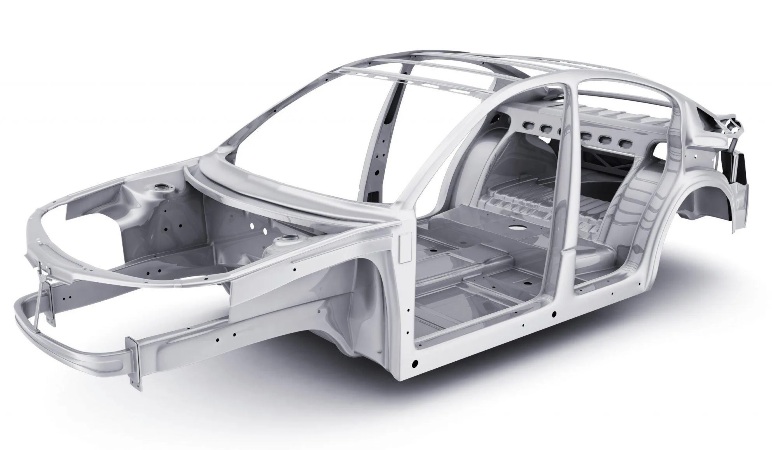
The automotive lightweight material market is at the forefront of transforming the automotive industry, driven by a compelling need for fuel efficiency, reduced emissions, and enhanced performance. The automotive lightweight material market is poised for continued expansion and is expected to grow at a CAGR of 3.5% during the forecast period of 2024 to 2032. The ongoing drivers and innovative strategies employed by key players are expected to shape the landscape of automotive lightweight materials, contributing to the development of vehicles that are not only fuel-efficient and performance-driven but also aligned with consumer preferences for sustainability and eco-friendliness.

Stringent Fuel Efficiency Standards Fostering Adoption
A paramount driver in the automotive lightweight material market is the global push for stringent fuel efficiency standards. Evidence includes government regulations worldwide imposing strict fuel economy targets, and compelling automakers to adopt lightweight materials to reduce vehicle weight and enhance fuel efficiency. This driver is evident in the increased use of materials such as aluminum, high-strength steel, and advanced composites in vehicle manufacturing. As the automotive industry pivots towards electrification, lightweight materials play a pivotal role in extending the range of electric vehicles and meeting ambitious emissions reduction goals.
Advancements in Composite Technologies
The continuous advancements in composite technologies emerge as a significant driver shaping the automotive lightweight material landscape. Evidence includes the development of innovative composites with enhanced strength-to-weight ratios, durability, and cost-effectiveness. The adoption of carbon fiber-reinforced plastics (CFRP) and glass fiber-reinforced plastics (GFRP) in structural components demonstrates a paradigm shift towards materials that offer high performance while significantly reducing overall vehicle weight. This driver reflects the industry's commitment to exploring cutting-edge materials that not only meet safety and performance standards but also contribute to the overall lightweight of vehicles.
Consumer Demand for Sustainable and Eco-Friendly Vehicles
Consumer demand for sustainable and eco-friendly vehicles is a compelling driver influencing the adoption of lightweight materials in the automotive sector. Evidence includes market trends showcasing a shift in consumer preferences towards electric vehicles (EVs) and hybrid models, which inherently benefit from reduced weight. This driver is underscored by automakers' strategies to align with consumer values by incorporating eco-friendly materials, such as recycled plastics and bio-based composites, in vehicle design. As consumers increasingly prioritize sustainability, the automotive industry responds by incorporating lightweight materials that contribute to both environmental conservation and improved vehicle efficiency.
Cost Concerns and Affordability Challenge
A significant restraint in the automotive lightweight material market is the persistent concern regarding costs and affordability. Evidence includes challenges faced by automakers in balancing the benefits of lightweight materials with the associated costs, which can be higher compared to traditional materials. The restraint is further emphasized by the economic uncertainties and cost pressures experienced by the automotive industry. While lightweight materials offer substantial advantages, the upfront costs and investment required for retooling manufacturing processes present challenges, impacting the widespread adoption of these materials across the automotive market.
By Product: Composites Dominate the Market
In 2023, the automotive lightweight material market witnessed substantial revenue from both Metals and Composites. However, Composites dominated, reflecting their versatility and superior strength-to-weight ratios. Looking at the highest CAGR during the forecast period from 2024 to 2032, Plastics demonstrated the most significant growth potential. This nuanced segmentation reflects the ongoing industry shift towards innovative materials that balance performance, cost, and sustainability.
By End-use: Passenger Cars Dominate the Market
Market segmentation by end-use in 2023 showcased robust revenue streams from Passenger Cars, with the highest revenue. However, Light Commercial Vehicles (LCV) demonstrated the highest CAGR during the forecast period, indicating a notable increase in the adoption of lightweight materials in the commercial vehicle segment. Simultaneously, Heavy Commercial Vehicles (HCV) maintained substantial revenue, illustrating the diverse applications of lightweight materials across different vehicle types.
APAC remains the Global Leader
Geographically, the automotive lightweight material market displayed diverse trends in 2023, with Asia-Pacific leading in both revenue generation and the highest CAGR. This reflects the region's dominance in automotive manufacturing, coupled with stringent emissions standards and a growing market for electric vehicles. North America and Europe also contributed significantly to revenue, indicating mature markets with sustained demand. These geographic trends underscore the global nature of the automotive lightweight material market, with different regions playing key roles in its growth and evolution.
Market Competition to Intensify during the Forecast Period
In the competitive landscape, top players such as ArcelorMittal, BASF SE, Toray Industries, LyondellBasell, Novelis Inc, Alcoa Corporation, Owens Corning, Stratasys Ltd., Tata Steel and POSCO are driving innovation and shaping the future of automotive lightweight materials. These key players reported substantial revenues in 2023, expecting continued growth from 2024 to 2032. Their strategic focus on advancing composite technologies, addressing cost concerns through research and development, and aligning with sustainability goals positions them as influential entities in the automotive lightweight material landscape. As the market evolves, these players are anticipated to play a pivotal role in driving technological advancements and ensuring that lightweight materials become an integral part of the automotive industry's future.
Historical & Forecast Period
This study report represents analysis of each segment from 2022 to 2032 considering 2023 as the base year. Compounded Annual Growth Rate (CAGR) for each of the respective segments estimated for the forecast period of 2024 to 2032.
The current report comprises of quantitative market estimations for each micro market for every geographical region and qualitative market analysis such as micro and macro environment analysis, market trends, competitive intelligence, segment analysis, porters five force model, top winning strategies, top investment markets, emerging trends and technological analysis, case studies, strategic conclusions and recommendations and other key market insights.
Research Methodology
The complete research study was conducted in three phases, namely: secondary research, primary research, and expert panel review. key data point that enables the estimation of Automotive Lightweight Material market are as follows:
Market forecast was performed through proprietary software that analyzes various qualitative and quantitative factors. Growth rate and CAGR were estimated through intensive secondary and primary research. Data triangulation across various data points provides accuracy across various analyzed market segments in the report. Application of both top down and bottom-up approach for validation of market estimation assures logical, methodical and mathematical consistency of the quantitative data.
| ATTRIBUTE | DETAILS |
|---|---|
| Research Period | 2022-2032 |
| Base Year | 2023 |
| Forecast Period | 2024-2032 |
| Historical Year | 2022 |
| Unit | USD Million |
| Segmentation | |
Product
| |
End-Use
| |
Application
| |
|
Region Segment (2022-2032; US$ Million)
|
Key questions answered in this report